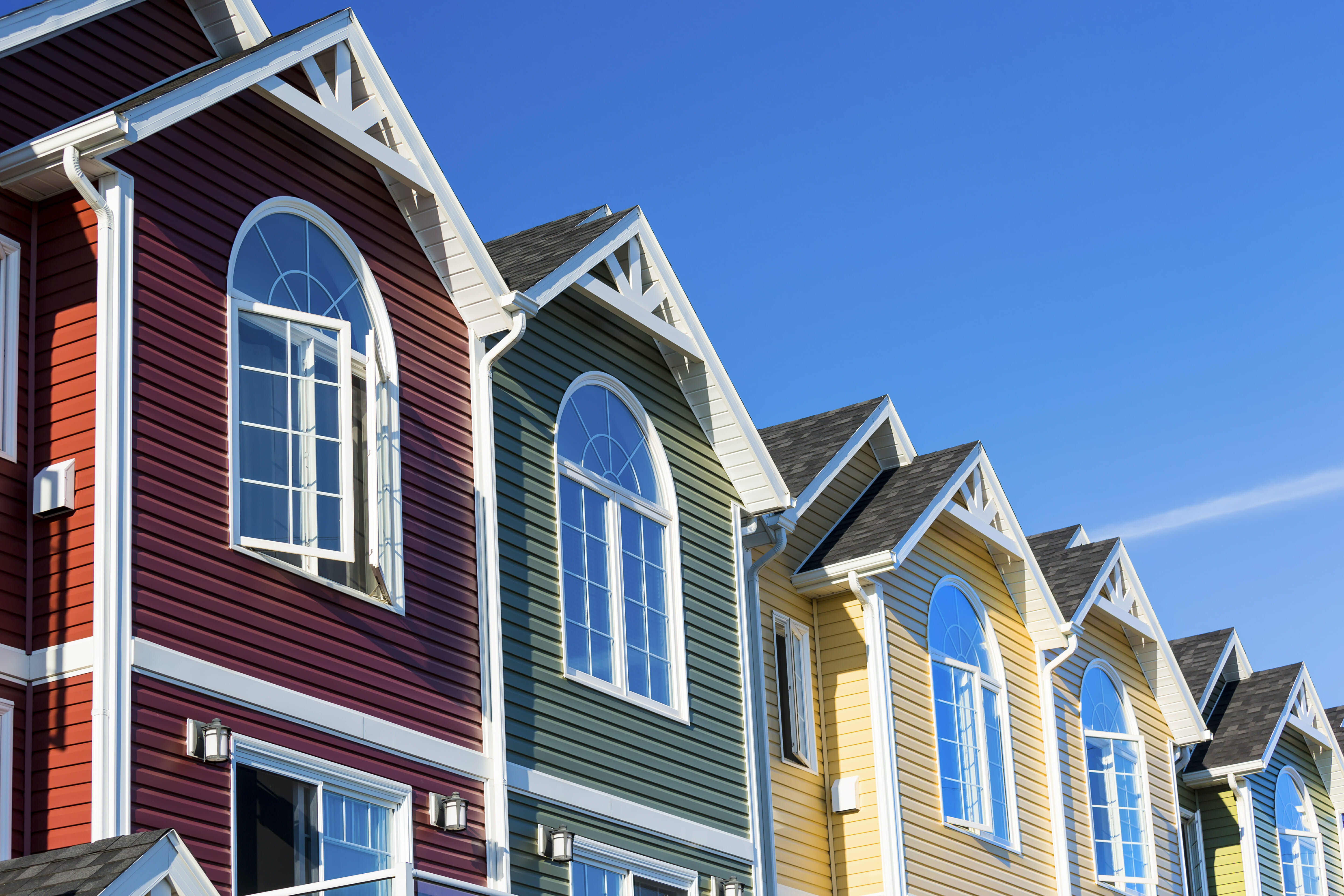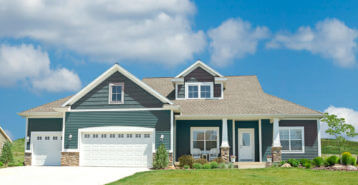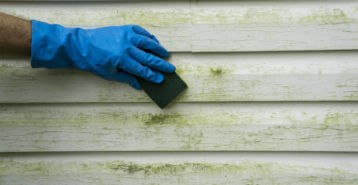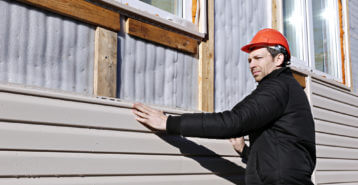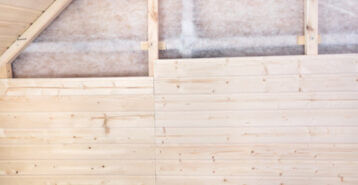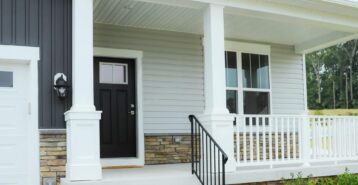Siding Colors by Material
Choosing a siding color is a big decision. The right palette should match your roof, complement your home’s style, and hold up to sun, rain, and snow. Below, we break down popular siding materials and the colors they wear best. You will also find brand-specific palettes and simple tips to mix field, trim, and accent shades with confidence.

Metal Siding Colors
Aluminum and Steel: These metals come in a wide range of factory finishes, from crisp whites and warm grays to charcoal and deep greens. Matte and low-gloss options help hide surface ripples and reduce glare. Dark colors modernize ranch and contemporary homes, while soft neutrals keep colonials timeless.
Copper: Fresh copper starts bright and warm, then shifts to brown and, over many years, to green patina. Choose siding and trim that age gracefully with it — warm beiges and taupes for the early years, then cooler grays and off-whites as the patina deepens.
Fiber Cement
Fiber cement takes color beautifully in both factory-applied finishes and high-quality paints. Classic choices include warm whites, greige, slate, navy, and olive. Darker colors add drama and pair well with light trim. Because factory finishes are durable, bold colors are a safe bet if you want a long-lasting look.
Related: Siding Installation Guide
James Hardie Siding Colors
James Hardie’s collections focus on region-tested colors. You will see popular field options like Arctic White, Cobble Stone, Boothbay Blue, and Iron Gray, plus accent colors designed to match their trim and soffit lines. Use a light base color with a crisp white trim for a coastal feel, or flip it — dark base with light trim — for modern contrast.
Vinyl
Vinyl runs the gamut from soft pastels and warm neutrals to deeper blues, greens, and charcoal. Darker vinyl needs a vinyl-safe, heat-stable finish from the factory to prevent warping. Pair a mid-tone field with bright white trim for a clean, classic look.
Vinyl Siding Paint Colors
If you plan to paint vinyl, choose “vinyl-safe” paints in lighter colors unless the product specifically supports dark shades. Paint that absorbs too much heat can cause panels to bow.
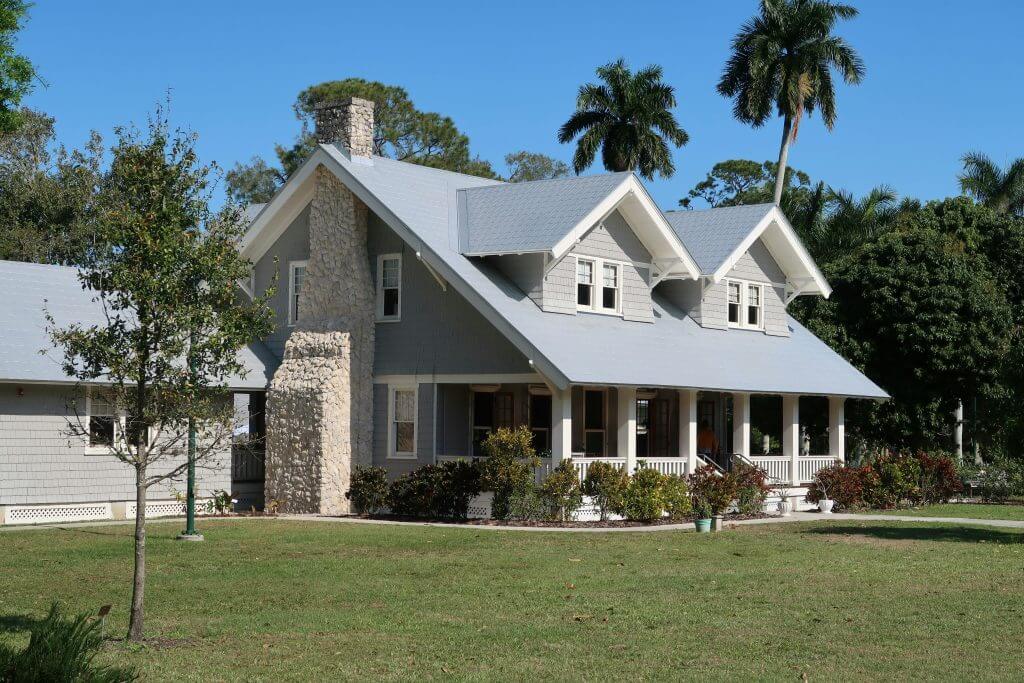
Vinyl Siding Color Combinations
- Warm White + Black Trim + Wood-Tone Door: Modern farmhouse with strong contrast.
- Light Gray + Arctic White Trim + Navy Door: Coastal and crisp.
- Greige + Cream Trim + Deep Green Door: Classic and calm.
Vinyl Shake Siding Colors
Use cedar-tone, driftwood, or weathered gray shakes in gables or on accents. Pair with a smooth lap field color that is a shade lighter or darker for depth without clutter.
Siding Color for a Copper Roof
 Copper changes over time, so pick a palette that looks good at every stage. Early on, lean warm — sand, tan, and cream. As the roof browns, mid-grays and off-whites work well. When patina turns green, cool grays, stone, and soft whites let the roof shine. Keep trim simple and consistent across all elevations.
Copper changes over time, so pick a palette that looks good at every stage. Early on, lean warm — sand, tan, and cream. As the roof browns, mid-grays and off-whites work well. When patina turns green, cool grays, stone, and soft whites let the roof shine. Keep trim simple and consistent across all elevations.
Board and Batten Siding Colors
Try a deep base color like charcoal, navy, or forest green with bright white trim, or flip it with a warm white base and medium-tone trim for a softer look. Vertical lines already add interest — limit accents to one or two supporting colors.
Siding Colors by Brand
Brands offer different finish technologies and curated palettes. Factory finishes often include longer fade and peel warranties than site-applied paint. Here is what to expect from popular siding brands:
- Diamond Kote: Check out the brand’s color studio for pre-finished palettes with rich neutrals and modern dark colors designed for long fade resistance.

- Mastic (by Ply Gem): Just one of Ply Gem’s siding range, Mastic comes in a few different styles. Colors range from classic whites to deep coastal blues with matching accessories.
- CertainTeed Vinyl Siding: CertainTeed boasts an extensive color library, from Sable Brown to Autumn Red with coordinating trims and shakes for layered designs.
- Georgia-Pacific Vinyl Siding: Check out Georgia-Pacific’s sample home gallery to see their color options, like Wedgewood and Cypress. Core neutrals and region-friendly tones that are easy to match across product lines.
- Norandex: From pale Champagne and Wheat, to deeper options like Geneva Blue and Harbor fog, Norandex offers a balanced mix of light, mid, and dark hues with weather-resistant finishes.
- ProVia: ProVia’s vinyl siding colors run from White and Linen to Mountain Berry and Neptune, a deep blue-gray.
Pro Tip: Decide on trim and fascia color at the same time as the base color. A clean, consistent trim choice makes almost any siding color look intentional and finished. Looking for more assistance choosing the right siding color for your home? Let Modernize connect you with our network of pro siding installers. They’ll help you find the right color and type for your home and goals!
How to Choose the Right Siding Color
 Picking a siding color is easier when you match it to your priorities. Use the guide below to narrow your choices quickly and confidently.
Picking a siding color is easier when you match it to your priorities. Use the guide below to narrow your choices quickly and confidently.
 Budget Reality Check: Premium finishes and deep, saturated colors sometimes cost more. If budget is a priority, pick a classic base color so you can splurge on upgraded trim or accentst.
Budget Reality Check: Premium finishes and deep, saturated colors sometimes cost more. If budget is a priority, pick a classic base color so you can splurge on upgraded trim or accentst.Next Steps
Compare top-rated siding pros in your area.
Read real homeowner reviews, explore qualifications, and view promotions. Modernize makes it easy to browse professionals and find one that will be perfect for your project.
